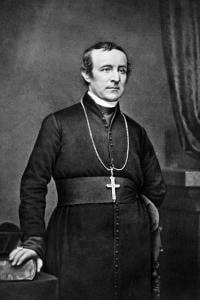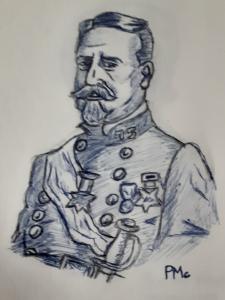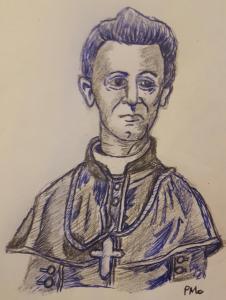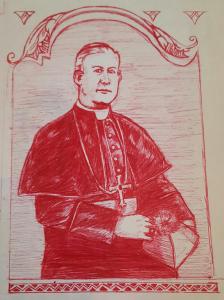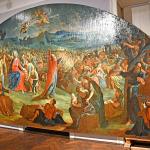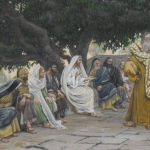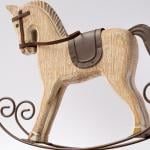First Bishop of Richmond, A.D. 1820
Bishop Kelly was a native of Ireland. He was for many years Professor, and at the time of his appointment as Bishop, President of Birchfield College, near Kilkenny. In 1820 the Catholics of Norfolk, Virginia, and those of Charleston, South Carolina, petitioned the Holy See for the erection of Episcopal Sees in those States. By Apostolic Letters, bearing date July 11, 1820, the Holy See erected Virginia into a diocese, with its See at Richmond, and appointed Dr. Kelly its first Bishop. He was consecrated in the parish chapel of St. Mary, Kilkenny, in the diocese of Ossory, August 24, the feast of St. Bartholomew, by the Most Rev. Dr. Troy, Archbishop of Dublin, assisted by Right Rev. Dr. Murray, Coadjutor of Dublin, and the Right Rev. Dr. Marrum, Bishop of Ossory. He was present afterwards as one of the assistant Prelates, at the consecration of Bishop England, of Charleston. He arrived at Norfolk, where he designed to reside in consequence of the greater number of Catholics there, on January 19, 1821, and on the following Sunday published his authority in the usual manner.
There was one church at Norfolk, built about the year 1809. This was the first cathedral of Virginia. There were six other churches at the diocese; one at each of the following places, viz.: Portsmouth, Richmond, Martinsburgh, Winchester, Bath, and Shepherdstown; the last four were attended by clergymen from Maryland; but Bishop Kelly earnestly endeavored to provide for them a resident pastor located at Winchester.
There was not a Catholic school in the diocese, though many of the teachers in the State were Catholics. Such was the poverty of the Bishop, that he was compelled to open a school, conducted by himself, at Norfolk, in order to gain a livelihood.
His labors in the mean time were indefatigable, and he did much for the good of his flock. He performed, in addition to his teaching, all the duties of a missionary. He found himself unable to supply the spiritual wants of his sparse flock in so large a diocese. The great Cumberland Road was then under construction, and quite a number of Catholic laborers were engaged on it. Some more wealthy Catholic Irishmen were attracted thither by probable opportunities of obtaining contracts on the road, and settled in Wheeling, through which the road passed. So wild and unimproved was the country at that time, that these Catholics did not even know what quarter to apply to for spiritual aid, until directed to Bishop Kelly, who made every effort to supply their wants. The Rev. Mr. O’Brien, then stationed at Pittsburgh, was the first priest, and after his removal to Kentucky, Bishop Kelly gave the necessary authority to the Rev. Mr. Maguire to erect a church at Wheeling, where the Catholics, though few, were very zealous. In the eastern part of the State there was little to be done, in consequence of the fewness of Catholics, and the field seemed not ready for cultivation. The Holy See, in consequence of Bishop Kelly’s declining health and great merits, translated him to his native country, and to the Epsicopal See of Waterford and Lismore, whither he returned in July, 1822. The See of Richmond, Virginia, was placed under the administration of Archbishop Maréchal, who always regarded this dismemberment of his diocese as premature. Bishop Kelly administered the diocese of Waterford and Lismore for seven years with ability and zeal, and was venerated as a holy Bishop. He died October 8, 1829.
Richard Henry Clarke, Lives of the Deceased Bishops of the Catholic Church in the United States (Volume I) (New York: P. O’Shea, 1872), 268-270.

![Bishop_Kelly_large[1]](https://wp-media.patheos.com/blogs/sites/224/2013/06/Bishop_Kelly_large1-226x300.jpg)

